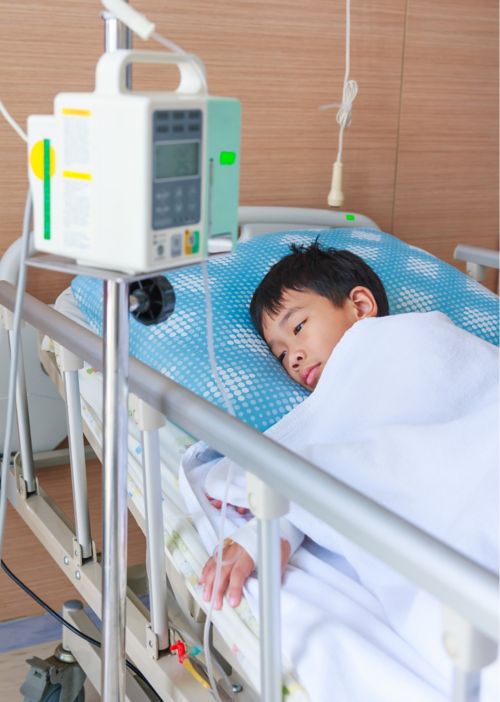Sepsis is a serious condition that can happen when the body has an extreme response to an infection. The infection can be caused by bacteria, viruses, fungi, or parasites.
Sepsis is a medical emergency that needs rapid diagnosis and treatment. Sepsis can cause poor blood flow to the body’s tissues and organs. This can decrease supply of oxygen and nutrients to organs and slow the removal of waste from the organs. Poor blood flow may lead to tissue damage, organ failure, septic shock, and death.
What is septic shock?
Sepsis can get worse and develop into severe sepsis. When it is not treated, it can lead to septic shock. This is a severe condition that can cause a dangerous drop in blood pressure and poor blood flow to organs leading to organ death.
Why is sepsis a serious condition?
Each year in the U.S., about 75,000 children develop sepsis and about 7,000 die. Worldwide, there are about 20 million cases of sepsis in children a year and about 2.9 million deaths in children younger than 5, according to the World Health Organization.
Even those who survive can have long-term disability or organ problems. Delays in treatment increase the risk of death and disability. The chance of death from sepsis increases by 8% for every hour treatment is delayed.
Sepsis can get worse and develop into severe sepsis. When it is not treated, it can lead to septic shock. This is a severe condition that can cause a dangerous drop in blood pressure and poor blood flow to organs leading to organ death.
What are the signs and symptoms of sepsis?
Signs and symptoms of sepsis include:
- Fever, 100.4°F (38°C) or above
- Chills or tremors
- Rapid breathing
- Low blood pressure
- Fast heart rate
- Pain or discomfort
- Pale or mottled (bluish) skin
- Cool, clammy, or flushed skin
- Confused or sleepy, hard to wake up
- Poor appetite
- Acting irritable, fussy, confused, or just "different"
Who is at risk for sepsis?
Some people are at higher risk of sepsis. Risk factors include:
How is sepsis diagnosed?
After a medical examination, your child will have tests to look for sepsis. These may include:
- Tests on blood, urine, spinal fluid, or a sample of your child’s bowel movements
- A chest X-ray
How is sepsis treated?
Sepsis treatment depends on the cause. Bacteria are the most common cause, but not the only one. Antibiotics treat infections from bacteria. Your child will get antibiotics until test results show what is causing sepsis. If bacteria are the cause, the doctor will tell you how long your child needs antibiotics. Your child will also get fluids to help blood and body fluids flow to tissues and organs.
Other treatments for sepsis include:
- Medicine to treat fever, such as acetaminophen (Tylenol®)
- Oxygen by mask or small tubes placed in the nose
- Being placed on a heart monitor may be needed
Can sepsis be prevented?
The best way to prevent sepsis is to diagnose and treat infections early. To prevent infection and lower risk of sepsis:
If your child has signs and symptoms of infection, call your doctor immediately.


